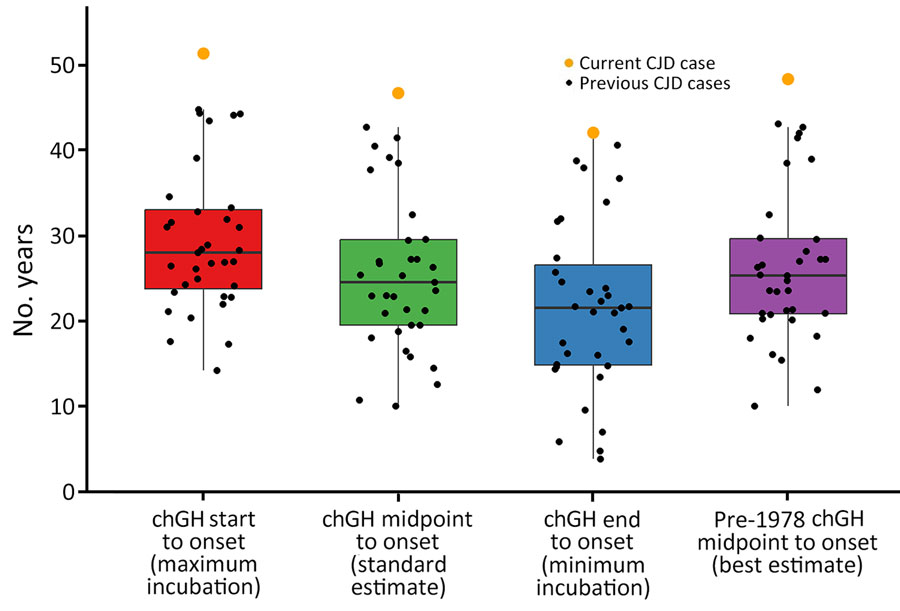Cadaveric Human Growth Hormone–Associated Creutzfeldt-Jakob Disease with Long Latency Period, United States
Anatevka S. Ribeiro

, Andrew B. Wolf, Ellen W. Leschek, Lawrence B. Schonberger, Joseph Y. Abrams, Ryan A. Maddox, Brian S. Appleby, Katie Glisic, Aaron Carlson, and Elizabeth Matthews
Author affiliation: University of California, Irvine, Orange, California, USA (A.S. Ribeiro); University of Colorado School of Medicine, Aurora, Colorado, USA (A.S. Ribeiro, A.B. Wolf); National Institutes of Health, National Institute of Diabetes, Digestive and Kidney Diseases, Bethesda, Maryland, USA (E.W. Leschek); Centers for Disease Control and Prevention, Atlanta, Georgia, USA (L.B. Schonberger, J.Y. Abrams, R.A. Maddox); Case Western Reserve University, National Prion Disease Pathology Surveillance Center, Cleveland, Ohio, USA (B.S Appleby, K. Glisic); University Hospitals Cleveland Medical Center, Cleveland (B.S. Appleby, K. Glisic); University of Colorado Anschutz Medical Campus, Aurora (A. Carlson, E. Matthews)
Main Article
Figure 2

Figure 2. Comparison of latency estimates among US cases in a study of chGH-associated CJD with long latency period, United States. The patient in this report (current CJD case) was treated with chGH for 9.3 years starting in late 1971 at 7 years of age, and neurologic symptoms developed when she was 58 years of age. We used data from all 36 US cases of chGH-associated CJD to compare estimates of CJD latency periods via 4 methods: first dose of chGH to symptom onset (red), midpoint of chGH treatment to symptom onset (green), last dose of chGH to symptom (blue), and midpoint of pre-1978 chGH to symptom onset (purple). Using those 4 methods, we believe the last (purple box plot) to be the most accurate, giving a best estimate of 48.3 years for our patient’s latency period. Black dots indicate other CJD cases, box top and bottoms indicate 25th and 75th percentiles, horizontal lines inside boxes indicate medians, and whiskers extend to the furthest observed points within 1.5 times the interquartile range from the 25th and 75th percentiles. chGH, cadaveric human growth hormone; CJD, Creutzfeldt-Jakob disease.
Main Article
Page created: April 16, 2025
Page updated: May 27, 2025
Page reviewed: May 27, 2025
The conclusions, findings, and opinions expressed by authors contributing to this journal do not necessarily reflect the official position of the U.S. Department of Health and Human Services, the Public Health Service, the Centers for Disease Control and Prevention, or the authors' affiliated institutions. Use of trade names is for identification only and does not imply endorsement by any of the groups named above.
